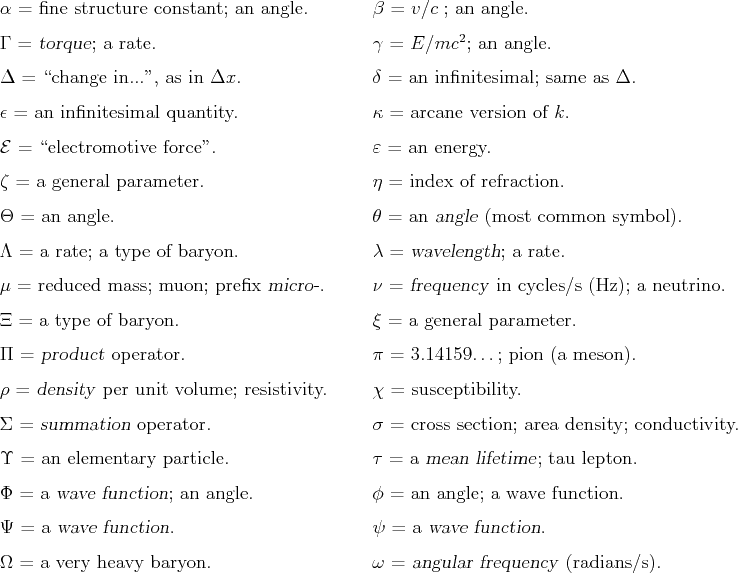


Next: Functions
Up: REPRESENTATIONS
Previous: Number Systems
In Physics we like to use a very compact notation for things
we talk about a lot; this is æsthetically mandated by
our commitment to making complicated things look
[and maybe even be] simpler.
Ideally we would like to have a single character
to represent each paradigmatic "thing" in our lexicon,
but in practice we don't have enough characters3.5
and we have to re-use some of them in different contexts,
just like English!
In principle, any symbol can be used to represent
any quantity, or even a non-quantity (like an "operator"),
as long as it is explicitly and carefully defined. In practice,
life is easier with some "default" conventions
for what various symbols should be assumed to mean
unless otherwise specified.
On the next pages
are some that I will be using a lot.3.6
Note: in print, a little extra information
can be packed into the font used for a given character.
The convention in Physics is that a character used as a symbol
(like m for mass) is italicized. The letter m is also used
(without italics) as an abbreviation for meter. Units are generally
not italicized. Examples are shown in the second table below.
Table 3.1:
Roman symbols commonly used in Physics:
| |
 |
Table 3.2:
Roman abbreviations commonly used in Physics:
| |
 |
Table 3.3:
Greek symbols commonly used in Physics
| |
 |



Next: Functions
Up: REPRESENTATIONS
Previous: Number Systems
Jess H. Brewer -
1998-09-04
 -
A SKEPTIC's
GUIDE
-
A SKEPTIC's
GUIDE  -
A SKEPTIC's
GUIDE
-
A SKEPTIC's
GUIDE 


